What is the Difference Between OKRs vs KPIs?
OKRs vs KPIs: Understanding the Key Differences Organizations often
Organizations often use OKRs vs KPIs (Key Performance Indicators) to measure success, but they serve different purposes. OKRs focus on setting ambitious goals and driving strategic growth, while KPIs track ongoing performance and operational efficiency. In this article, we’ll break down the key differences between OKRs vs KPIs, helping you understand when to use each for better business outcomes.
OKR stands for Objectives and Key Results. It is a powerful goal-setting framework used to set and track goals and measure progress in achieving them.
In the OKR framework, objectives are specific, measurable, and time-bound goals that align with the overall mission and vision of the organization. Key results are the measurable outcomes that indicate progress toward achieving the objectives.
One of the key benefits of OKRs is that they provide a way to align the efforts of individuals and teams with the strategic priorities of the organization. By setting clear objectives and measurable key results, OKRs help to focus attention and motivate action toward achieving important goals.
OKRs are often reviewed and revised on a regular cadence, such as quarterly, to ensure that they remain relevant and challenging.
Startup: Objective: Launch a new product Key Results:
KR 1: Conduct customer research and interviews with 100 potential users
KR 2: Develop and test three different product prototypes.
Non-profit organization: Objective: Increase donor engagement Key Results:
KR1: Send a personalized thank-you message to every donor within 24 hours of receiving a donation.
KR2: Host three fundraising events with at least 100 attendees each.
To learn more about OKRs, Visit our latest blog where we extensively talk about What are OKRs.
KPI is a short form for Key Performance Indicator, which is a tool used to measure and evaluate how effectively an organization, team, or individual is achieving their goals. It aims and measures the organization’s business-as-usual metrics that evaluate the success of an ongoing process or specific activity.
KPIs can be quantitative or qualitative, and they may measure various factors such as sales, customer satisfaction, productivity, efficiency, quality, or safety.
Moreover, KPIs are used only to measure the results of an ongoing process or project. they are unable to reveal what must change or grow to improve those figures.

There isn’t necessarily a “better” option between OKRs vs KPIs as they serve different purposes and can both be useful depending on the situation. Here are some key differences between the two:
Ultimately, the choice between OKRs vs KPIs will depend on the specific needs and goals of the organization. Both can be useful in different contexts, and some organizations may find that a combination of both approaches works best.
KPIs can fail for a variety of reasons, including:
If KPIs are not carefully selected and defined, they may not accurately measure the desired outcomes. Similarly, if the metrics being measured are not relevant to the overall goals of the organization, KPIs may not be useful.
KPIs should be directly aligned with an organization’s strategic objectives. If there is a mismatch between KPIs and strategy, they may not accurately reflect progress toward the organization’s goals.
If KPIs are not understood or accepted by stakeholders, they may not be used effectively. This can result in low adoption rates or poor performance.
KPIs rely on accurate data collection and analysis. If data collection or analysis is poor, KPIs may not accurately reflect the desired outcomes.
KPIs are a tool for measuring performance but should not be the sole focus of an organization’s efforts. Overemphasis on KPIs can lead to a narrow focus on short-term goals, rather than long-term strategic objectives.
KPIs can fail if they are not carefully selected, aligned with strategy, and implemented effectively. Organizations should take care to ensure that KPIs are well-defined, relevant, and supported by stakeholders to maximize their effectiveness.
OKRs are not necessarily a replacement for KPIs as they serve different purposes. KPIs are typically used to measure specific, quantifiable outcomes or activities, while OKRs are designed to set and achieve specific objectives, often with an emphasis on stretching beyond current capabilities. Depending on the needs and goals of the organization, a combination of KPIs and OKRs may be appropriate.
Yes, it’s possible to have both KPIs and OKRs in an organization.
KPIs provide a way to measure the performance of specific areas of a business, such as sales or customer service, and can help companies understand how well they’re meeting their goals.
OKRs, on the other hand, are more focused on setting and achieving objectives that align with the company’s overall vision and strategy.
Both KPIs and OKRs can work together to help organizations achieve their goals. By setting objectives with OKRs, companies can identify the KPIs that are most important to achieving those objectives. Similarly, by tracking KPIs, companies can identify areas where they need to set objectives with OKRs to improve their performance.
In conclusion, both OKRs and KPIs are useful tools for measuring performance. While they have some similarities, they are also different in important ways. Ultimately, the choice between OKRs and KPIs depends on the organization’s goals and priorities.
Talk to our coaches and experts to learn more about OKR and its effectiveness.
Want to explore more? Try our 14-day free trial or book 30 minutes free coaching session with our OKR experts.
Editor2025-08-20T07:09:51+00:00August 19, 2025|Objectives and Key Results|
OKRs vs KPIs: Understanding the Key Differences Organizations often
Editor2025-08-12T06:01:25+00:00August 11, 2025|Objectives and Key Results|
Setting clear and measurable goals is essential for business success—but
Editor2025-07-23T05:08:56+00:00July 22, 2025|Performance Management|
In order to maintain success, businesses must make the most
Editor2025-07-23T05:25:36+00:00July 22, 2025|Performance Management|
Companies with effective performance management systems see a
Editor2025-07-22T06:44:05+00:00July 21, 2025|Objectives and Key Results|
As more organizations turn to Objectives and Key Results (OKRs)
Editor2025-07-21T06:43:31+00:00July 20, 2025|Performance Management|
In today’s fast-paced work environments, traditional annual reviews no longer
Editor2025-07-21T06:47:39+00:00July 20, 2025|Performance Management|
What is a Best Performance Management platform?In Recently times, Employee
Editor2025-07-16T09:44:38+00:00July 15, 2025|Performance Management|
OKR-Based Performance Management SystemOrganizations today are rapidly evolving, and managing
Editor2025-07-16T09:23:01+00:00July 15, 2025|Objectives and Key Results|
What is an OKRs?OKR (or) Objectives and Key Results. It
Editor2025-07-15T09:00:59+00:00July 14, 2025|Performance Management|
In today's competitive business landscape, organizations are constantly seeking effective
In today’s competitive business landscape, organizations are constantly seeking effective ways to evaluate and enhance employee performance. Performance appraisal methods play a crucial role in this process, offering structured approaches to assess, track, and improve workforce productivity. These methods provide valuable insights into employee strengths, areas for improvement, and alignment with organizational goals, ultimately contributing to the overall success of a company.
Various performance appraisal techniques have emerged as powerful tools for managers and HR professionals. From traditional approaches like Management by Objectives (MBO) to more modern systems such as Objectives and Key Results (OKRs), companies now have a wide array of options to choose from. This article explores the 10 best performance appraisal method, delving into their implementation, benefits, and potential challenges. By understanding these diverse techniques, organizations can make informed decisions to boost employee engagement, drive performance, and achieve their strategic objectives.
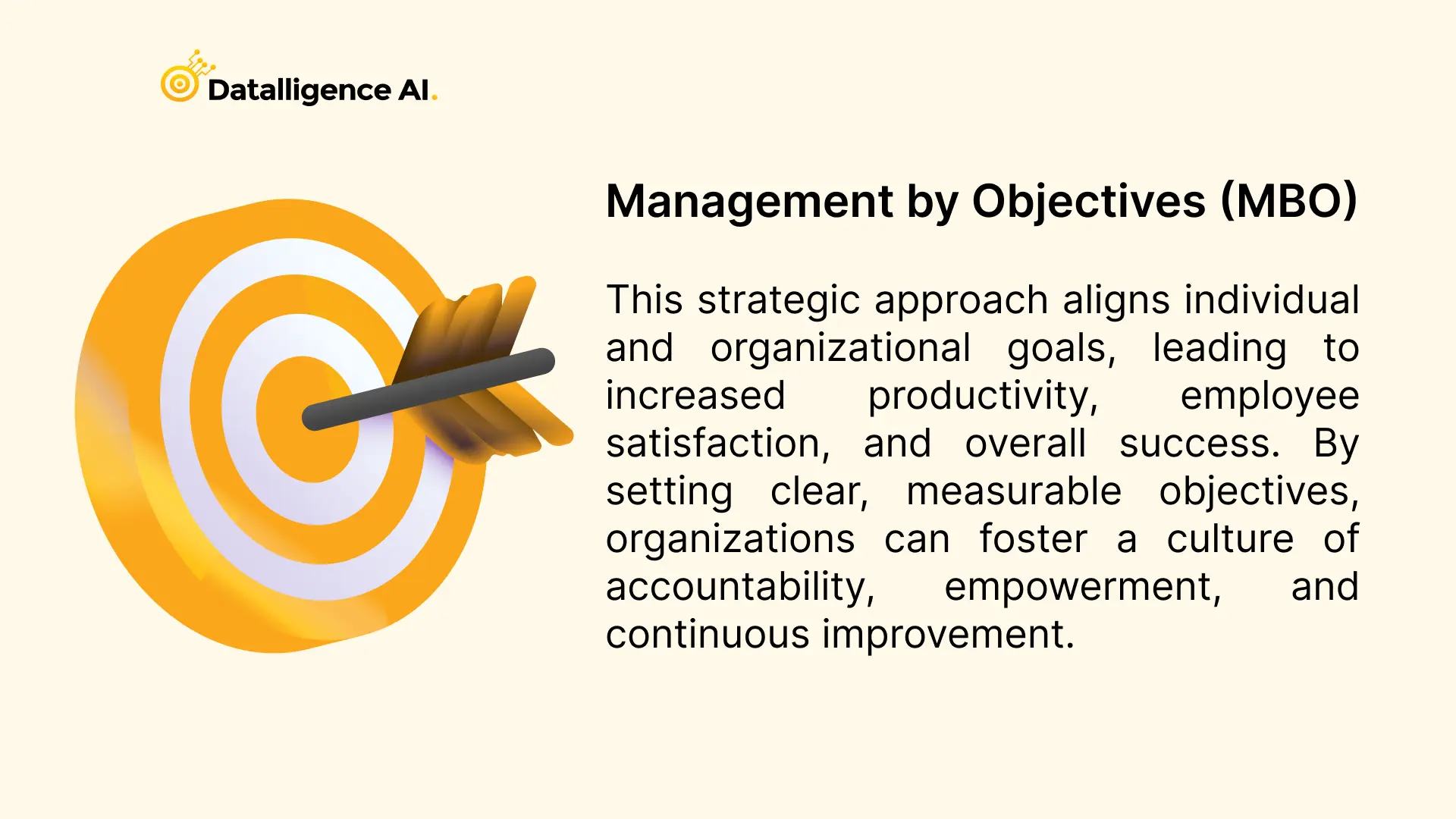
Management by Objectives (MBO) is a strategic performance appraisal method that has been around for decades. It focuses on aligning individual goals with organizational objectives. In this approach, managers and employees collaborate to set clear, measurable goals that contribute to the company’s overall success. MBO emphasizes transparency, with company goals set by top management and made visible to all employees. This top-down approach ensures that everyone understands the organization’s objectives and has a defined role in achieving them.
To implement MBO effectively, organizations typically follow a structured process:
This process requires continuous two-way communication between management and employees to track progress and adjust objectives as needed. While implementing MBO can be challenging and time-consuming, it often results in improved organizational structure and more efficient utilization of human resources.
MBO offers several advantages for organizations:
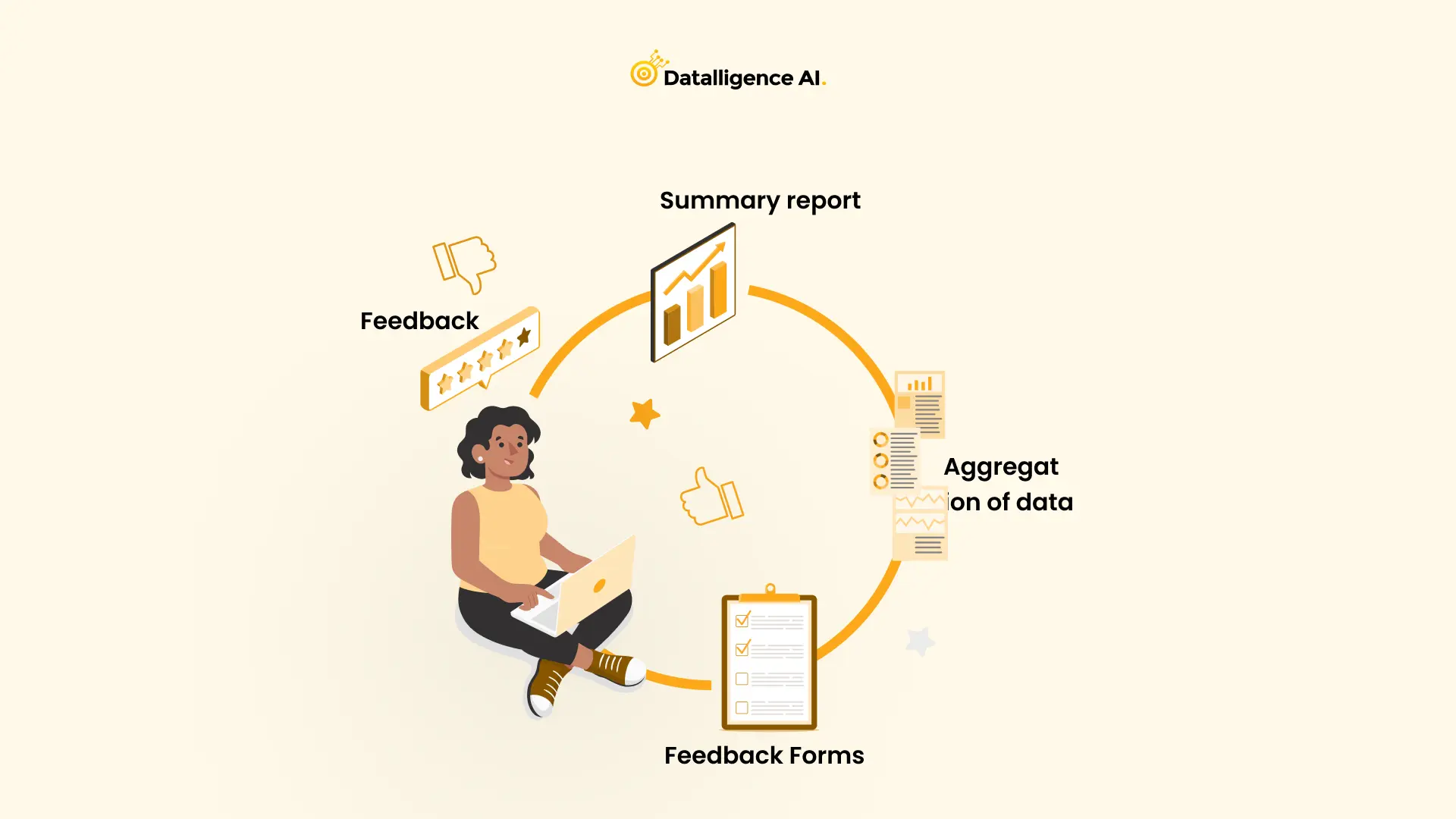
The 360-degree feedback method is a comprehensive performance appraisal approach that gathers input from multiple sources in an employee’s professional circle. This includes feedback from managers, peers, subordinates, and sometimes even customers or vendors. Unlike traditional reviews that rely solely on a manager’s assessment, this method provides a more holistic view of an employee’s competencies and job performance.
The process typically involves the following steps:
It’s crucial to note that 360-degree feedback should be used as a development tool, not for performance evaluation or determining pay and promotions.
This method offers several benefits:
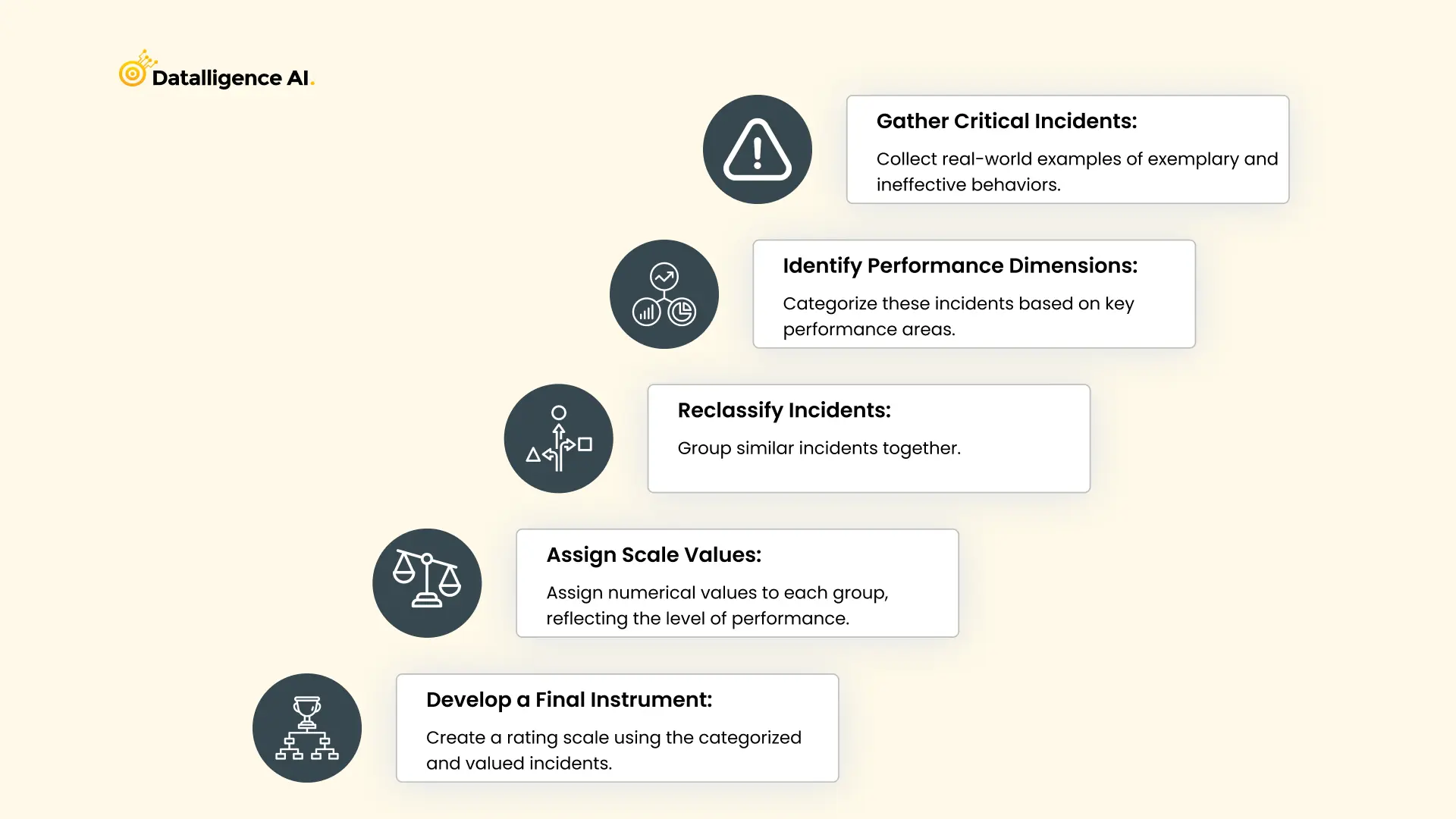
BARS is a performance appraisal method that combines traditional rating scales with specific behavioral examples. This approach focuses on observable behaviors rather than personal traits, providing a more objective and structured evaluation process.
The BARS methodology involves defining performance dimensions and developing descriptions for each level based on specific, observable behaviors. These descriptions are then anchored to points on a rating scale, typically ranging from poor to excellent. Evaluators rate employees by selecting the behavior that best matches their observed performance.
Implementing BARS requires several steps:
This process demands significant time and effort but results in a comprehensive system aligning roles with business priorities.
BARS has proven to be an effective performance appraisal method for several reasons:
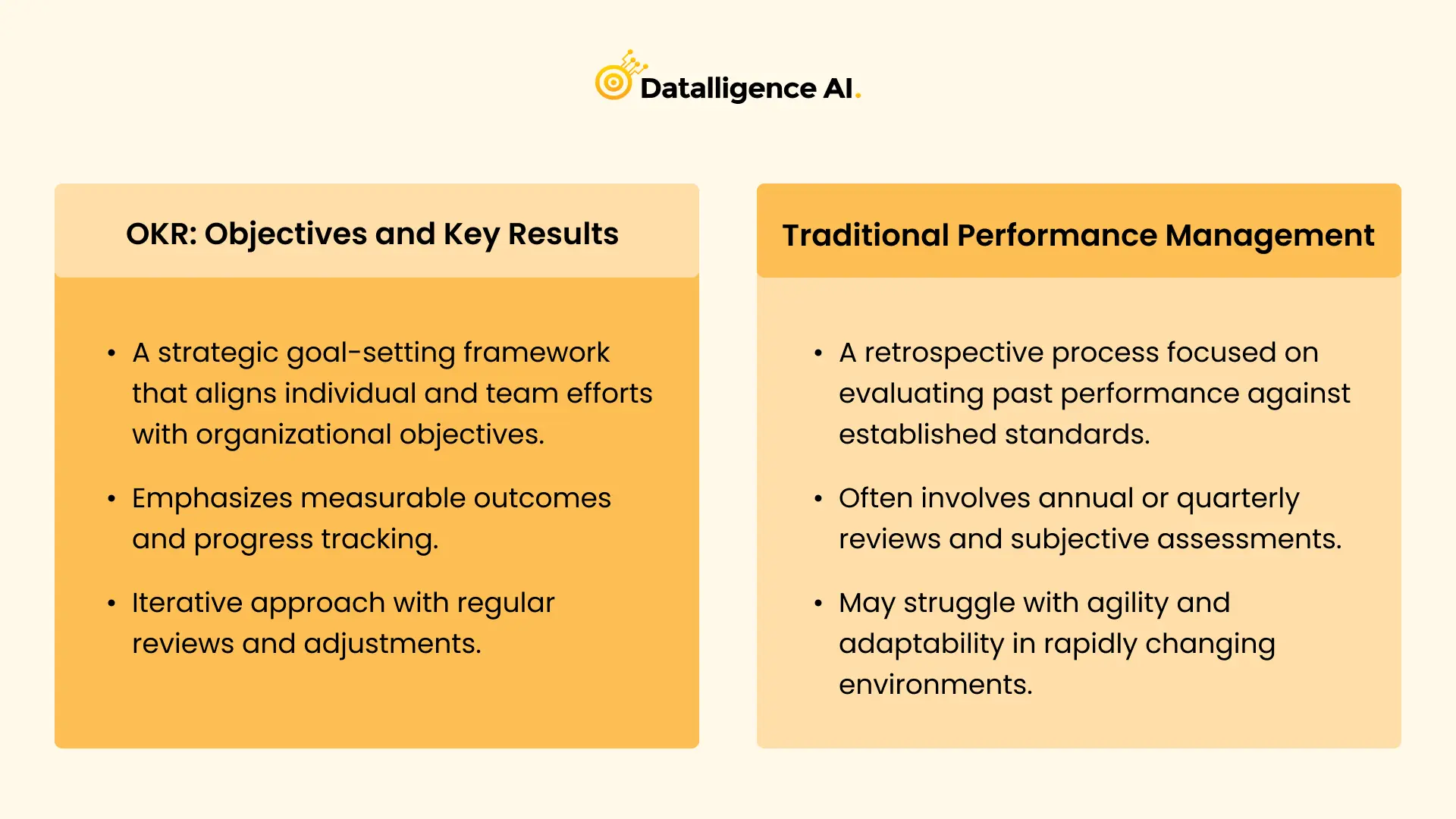
OKRs, or Objectives and Key Results, represent a goal-setting framework designed to align team efforts with organizational objectives. This method focuses on setting ambitious stretch goals that encourage innovation and growth. Unlike traditional performance management systems, OKRs emphasize the process of achievement rather than specific targets.
The OKR model consists of two main components:
OKRs promote transparency, collaboration, and alignment with broader organizational goals. They are typically set for shorter cycles, often quarterly, to encourage adaptability and timely course corrections.
While both OKRs and Management by Objectives (MBO) aim to set and communicate business objectives, they differ in several key aspects:
To implement OKRs effectively:
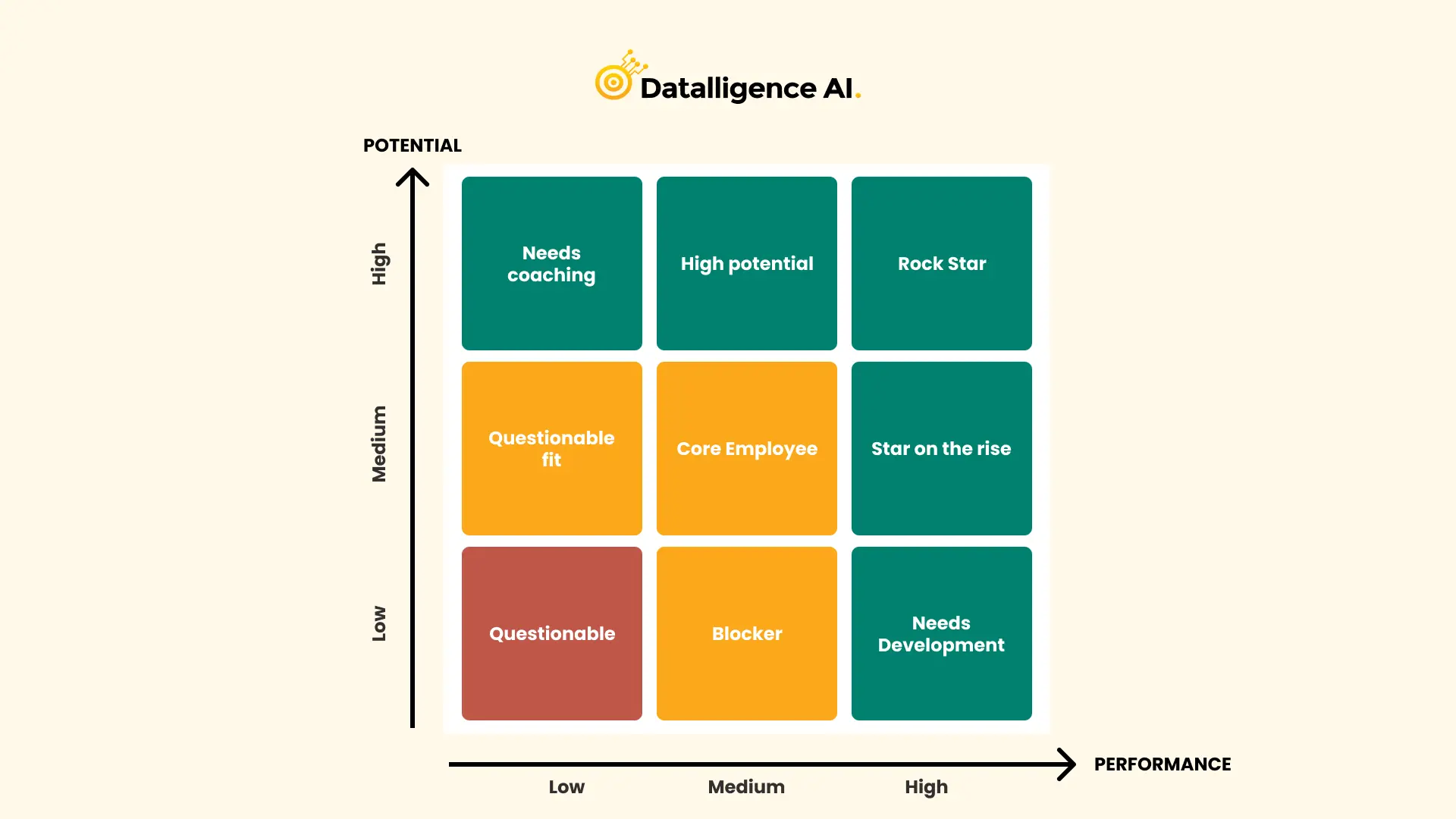
The Critical Incident Method is a qualitative performance appraisal technique that focuses on identifying and describing specific events where an employee demonstrated exceptionally good or poor behavior related to their job tasks. This method tracks instances when employees either exceed expectations or fall significantly short of their job function mandate. It measures both employee output and the behavior linked to performance metrics, providing concrete examples that have a significant impact on individual and organizational performance.
The process involves several key steps:
It’s crucial that incidents are recorded as they occur to maintain accuracy and detail. Some organizations encourage employees to record their own critical incidents, fostering self-reflection and responsibility.
This method offers several advantages:
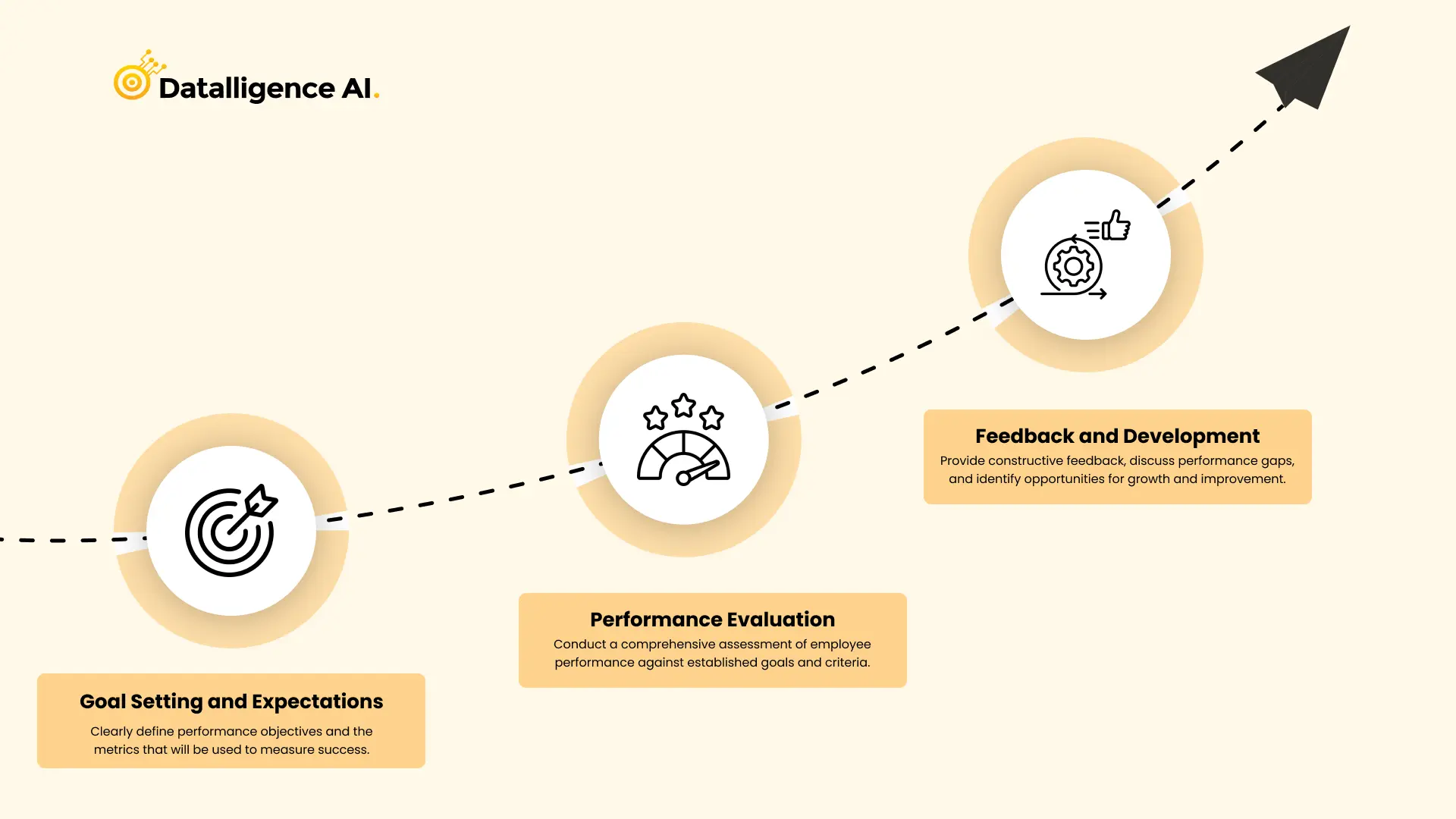
The Assessment Center Method is a comprehensive evaluation process used to assess candidates’ suitability for specific job roles, particularly for senior management positions. This approach involves a series of exercises and activities designed to simulate real-world job scenarios, allowing employers to evaluate candidates’ competencies and potential performance.
Assessment centers typically last one or more days and involve multiple candidates participating in various tasks. The process includes standardized evaluations based on multiple inputs, with several trained observers using different techniques to assess candidates. Judgments about behavior are made primarily through specifically developed assessment simulations, which are then pooled or statistically integrated to provide a comprehensive evaluation.
Common activities in assessment centers include:
These activities are designed to evaluate critical competencies such as communication, conflict management, leadership, and critical thinking.
Assessment centers offer several benefits:
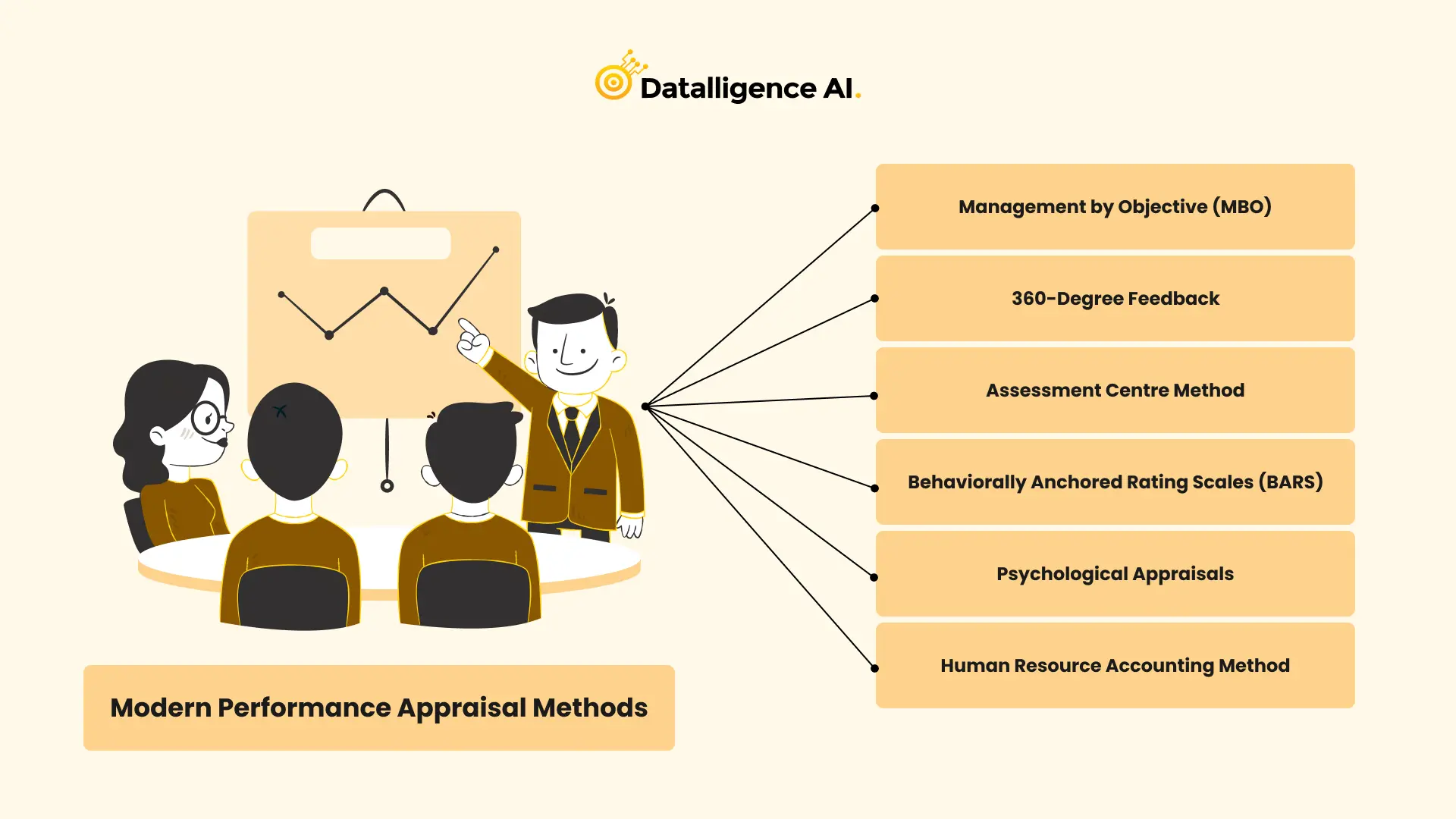
The self-assessment method is a crucial component of the performance management process, offering employees an opportunity for self-reflection on their job performance. This approach allows individuals to evaluate their strengths, areas for improvement, and contributions to the organization.
The self-assessment process typically involves employees completing a standardized form or template provided by their manager or HR team. These forms often include questions about accomplishments, learning opportunities, goals, and feedback on workplace culture. Employees are asked to rate their performance on a numerical scale, answer open-ended questions, or list their strengths and weaknesses. Once completed, the form is submitted to the manager for review before a performance discussion meeting.
Self-assessments offer several advantages:
Despite its benefits, the self-assessment method has some challenges:
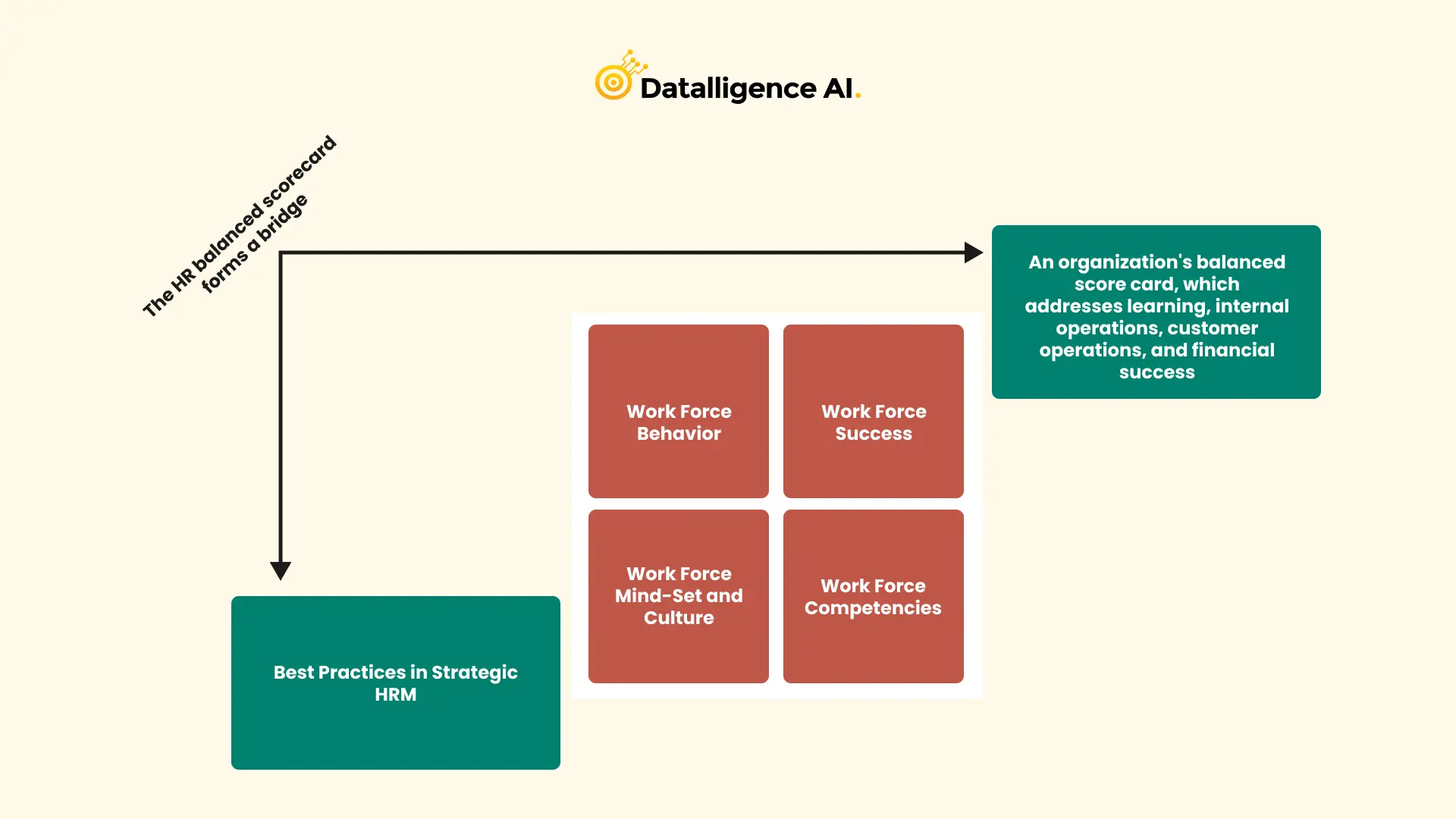
The Checklist Method is a structured approach to performance appraisal that uses predetermined criteria to evaluate employee performance. This method involves creating a comprehensive list of tasks, behaviors, and competencies relevant to a specific job role.
In this approach, managers use a standardized form or template to assess an employee’s performance across various dimensions. The checklist typically includes a series of questions or statements about job-related behaviors and skills. Managers rate each item based on the employee’s performance, often using a simple “yes” or “no” format or a numerical scale.
To implement the Checklist Method effectively:
The Checklist Method offers several benefits:
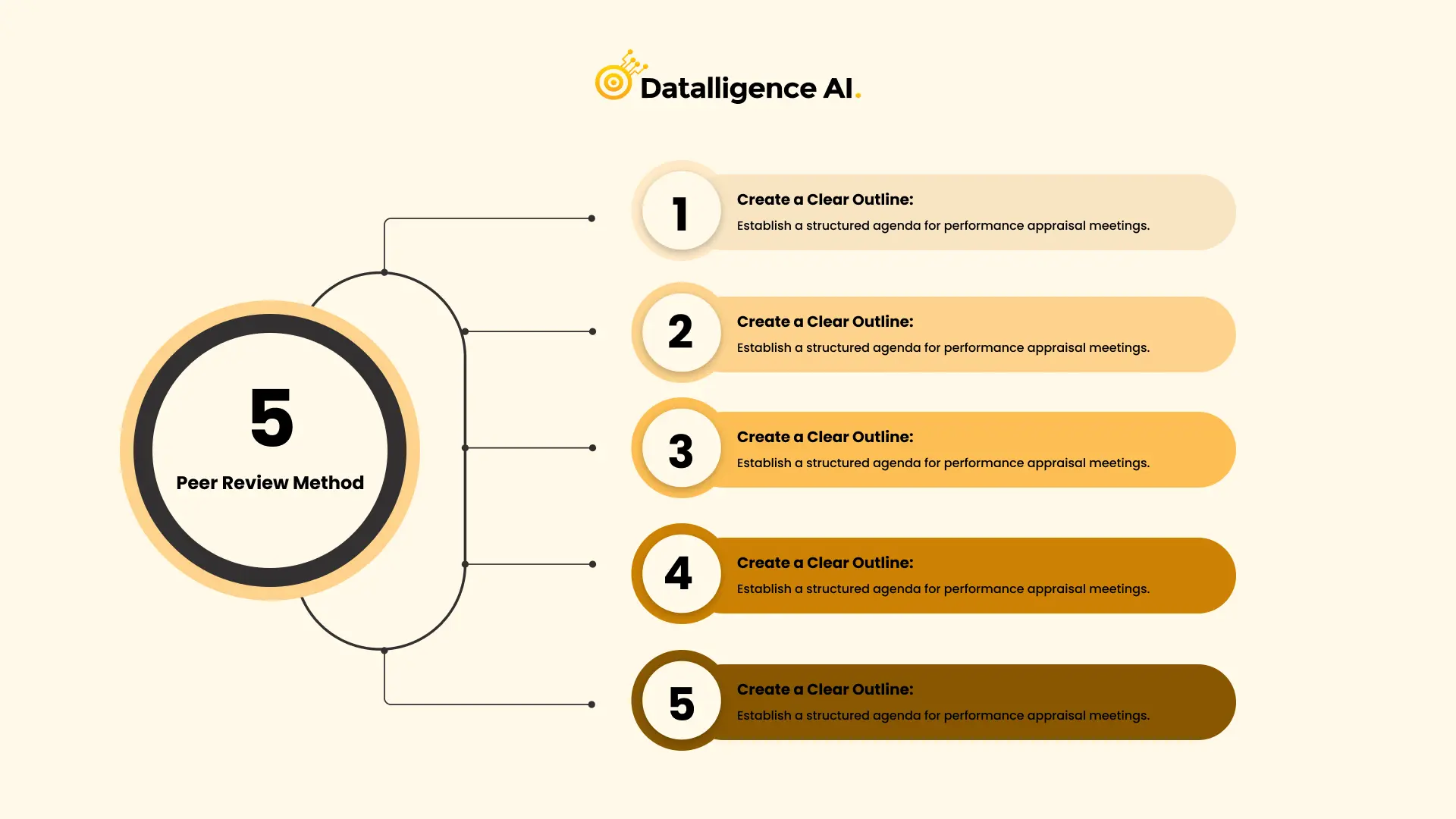
The peer review method is a collaborative approach to performance appraisal where employees evaluate their colleagues’ work performance, skills, and competencies. This method provides a multidimensional view of an employee’s contributions, offering insights that managerial assessments might miss. Organizations typically implement peer reviews as part of a formal evaluation process, allowing managers to gain a more comprehensive understanding of each team member’s strengths and weaknesses.
In a typical peer review process, employees anonymously fill out standardized forms about their colleagues’ performance. The anonymity encourages honest feedback, allowing reviewers to express their opinions without fear of repercussions. Reviewers are usually selected from those who regularly interact with the employee being evaluated, ensuring they have a working knowledge of the reviewee’s job duties and required skills.
Peer reviews offer several advantages to organizations:
These benefits contribute to a more engaged workforce and can help in developing targeted training programs to address specific skill gaps.
Despite its benefits, the peer review method has some potential drawbacks:
To mitigate these challenges, organizations should provide clear guidelines, emphasize the importance of objectivity, and ensure a supportive environment for the peer review process.
Psychological appraisal is a performance evaluation method that focuses on assessing an employee’s future potential rather than past performance. This approach analyzes seven key components: interpersonal skills, cognitive abilities, intellectual traits, leadership skills, personality traits, emotional quotient, and other related skills. Qualified psychologists conduct various tests, including in-depth interviews, psychological assessments, and discussions, to evaluate employees effectively.
The psychological appraisal method involves analyzing specific scenarios to gage an employee’s capabilities. For instance, observing how an employee handles an aggressive customer can provide insights into their persuasion skills, behavioral responses, and emotional intelligence. This approach helps determine hidden potential and future performance.
Several tools are used in psychological appraisals:
Psychological appraisals offer several advantages:
This method is ideal for large enterprises seeking to develop leadership pipelines, build teams, and resolve conflicts. Companies like Ford Motors, Exxon Mobil, and Procter & Gamble use psychological appraisals to assess their employees’ personality and performance.
Human Resource Accounting (HRA) is a performance appraisal method that quantifies and reports the value of human resources in financial terms. This approach recognizes employees as organizational assets and focuses on the return on investment (ROI) in human capital. HRA helps companies identify, measure, and report investments made in human resources, assessing their impact on organizational performance.
HRA analyzes an employee’s performance through the monetary benefits they yield to the company. It compares the cost of retaining an employee (cost to company) with the monetary contributions the organization has ascertained from that specific employee. This method considers various factors, including recruitment costs, training and development expenses, employee compensation and benefits, and productivity analysis.
To implement HRA effectively, organizations typically follow these steps:
HRA offers several benefits to organizations:
The evolution of performance appraisal methods has a significant impact on organizational success and employee growth. From traditional approaches like Management by Objectives to modern techniques such as OKRs, these methods provide structured frameworks to track performance and align individual goals with company objectives. Each method offers unique benefits, addressing different aspects of performance evaluation and employee development. As organizations continue to adapt to changing work environments, the effective implementation of these appraisal methods becomes crucial to foster a culture of continuous improvement and productivity.
At Datalligence, we understand the importance of choosing the right performance appraisal method for your organization. Our expertise in data-driven solutions can help you implement and optimize these methods to achieve your business goals. To explore how our tailored approach can enhance your performance tracking and employee development processes, start your free trial today. By leveraging the right combination of performance appraisal method, companies can create a more engaged workforce, develop strong leaders, and align their culture with strategic objectives, ultimately driving long-term success.
A performance appraisal is a systematic evaluation of an employee’s performance over a specific period. It aims to assess productivity, skills, accomplishments, and areas for improvement, ultimately helping organizations make decisions on promotions, training, and development.
Performance appraisals provide valuable insights into employee contributions, help align individual goals with organizational objectives, foster employee development, and support decisions related to promotions, compensation, and workforce management.
An effective performance review should be objective, data-driven, and aligned with the company’s strategic goals. Focus on clear, measurable outcomes, and offer constructive feedback that encourages growth. Modern performance reviews often rely on real-time data from automated systems, which help ensure that feedback is timely and actionable.
There isn’t a one-size-fits-all solution for performance appraisals. The best method depends on your company’s unique needs, culture, and goals. It’s important to adopt an appraisal system that streamlines processes, facilitates continuous feedback, and aligns with your company’s long-term performance management strategy.
Traditional performance appraisal methods usually involve formal, once-a-year reviews between managers and employees, focusing primarily on past performance. In contrast, modern approaches emphasize ongoing feedback, real-time insights, and involve input from multiple stakeholders, including peers and even self-assessments. Technology often plays a key role in modern systems, making them more dynamic and engaging for employees.